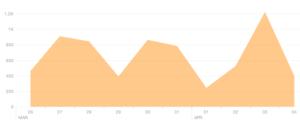Facebook is constantly changing the formula it uses to determine what content will appear in your newsfeed. Over the past year, nonprofits have been on the losing end of these changes. Most have seen their reach drop by about 50%, so that about 6% of fans will now see the average organizational post.
Who sees your content
Once they’ve liked your page, most fans won’t return to it. Instead, they spend their time on Facebook skimming the News Feed. Facebook decides what to show there based on behavior. The network’s goal is to maximize time on site to sell more advertising. And, if your audience is like most Facebook users, they are clicking more on friends’ baby pictures than on your climate news. Which means Facebook will serve up more of their friends’ content than yours. Unless you can wrest their interest away from those baby pictures!
How to maximize reach
There are a handful of best practices that have proven successful at engaging fans and increasing the reach of organizational content.
- Make it visual. Photo posts, especially those with text overlay, and link posts with a custom image generate more likes, shares, and clicks. The image at right, from 350.org’s Facebook page, was shared over 3,500 times in just 3 days’ time. On the flip side, Facebook recently announced they’ll be showing fewer text-only updates.
- Post regularly. Posting at least two or three times per week will help keep you on the radar of your fans. Recurring content, like “Throwback Thursday” or “Photo Friday,” can be a good way to create fresh, fun content even if you run short of news to share.
- Celebrate successes, and say thank you. People like to share good news. And they also love the feel recognized, so be sure to thank your fans after a successful campaign. Check out Rainforest Action Network’s post thanking supporters for their help getting Goldman Sachs to divest from coal exports.
- Advertise strategically. A $50 ad buy can help a call to action reach up to 20,000 fans, and you can target by location, age, or interests. Promoted posts can be a wise investment during key moments in a campaign.
- Tag other organizations’ Facebook Pages. If you are teaming up with other groups for an event or a project, tag them in your posts. Thanks to a recent change, Facebook may now show updates to fans of all organizations tagged in a post.
Why email is still king
Social networks are businesses. We are not the customers, we’re the product. That is why email is still our communications channel of choice. It’s the only way you can reliably reach your supporters. So, converting those “likes” to email subscribers should be a core part of your Facebook strategy. There are a few ways to do this:
- Ask your fans. Many times, fans on Facebook are interested in learning more or becoming more involved with your organization. Make it easy for them by highlighting the benefits, and including a link to the email sign-up page on your website.
- Start a petition or letter drive. Use websites like Change.org, Signon.org, Care2 or a platform like Salsa to facilitate online actions that enable your fans to show their support and you to collect their email addresses.
- Run a contest. Facebook has a variety of apps that can collect content and email addresses simultaneously. We like WooBox or ShortStack for photo contests. Users can submit photos and/or vote for their favorite. Prizes are key to incentivize broad participation!
- Facilitate Facebook activism. Tools like ActionSprout let fans take action directly on Facebook (“thanking” an elected official for taking a stand, “stopping” a bill they oppose, etc.) The get on Facebook is broader awareness, but the bigger benefit for organizations is that ActionSprout harvests email addresses so you can follow up.
How to tell what’s working (and what isn’t)
 Facebook Insights can help you hone in on the most successful types of content, and the best days (and times of day) to post it. This post on the Resource Media blog explains how. We recommend checking Insights monthly, so you can follow the trends in your data to figure out what your audience wants, and use that successful formula in the future.
Facebook Insights can help you hone in on the most successful types of content, and the best days (and times of day) to post it. This post on the Resource Media blog explains how. We recommend checking Insights monthly, so you can follow the trends in your data to figure out what your audience wants, and use that successful formula in the future.
Download a copy of this tipsheet here.

